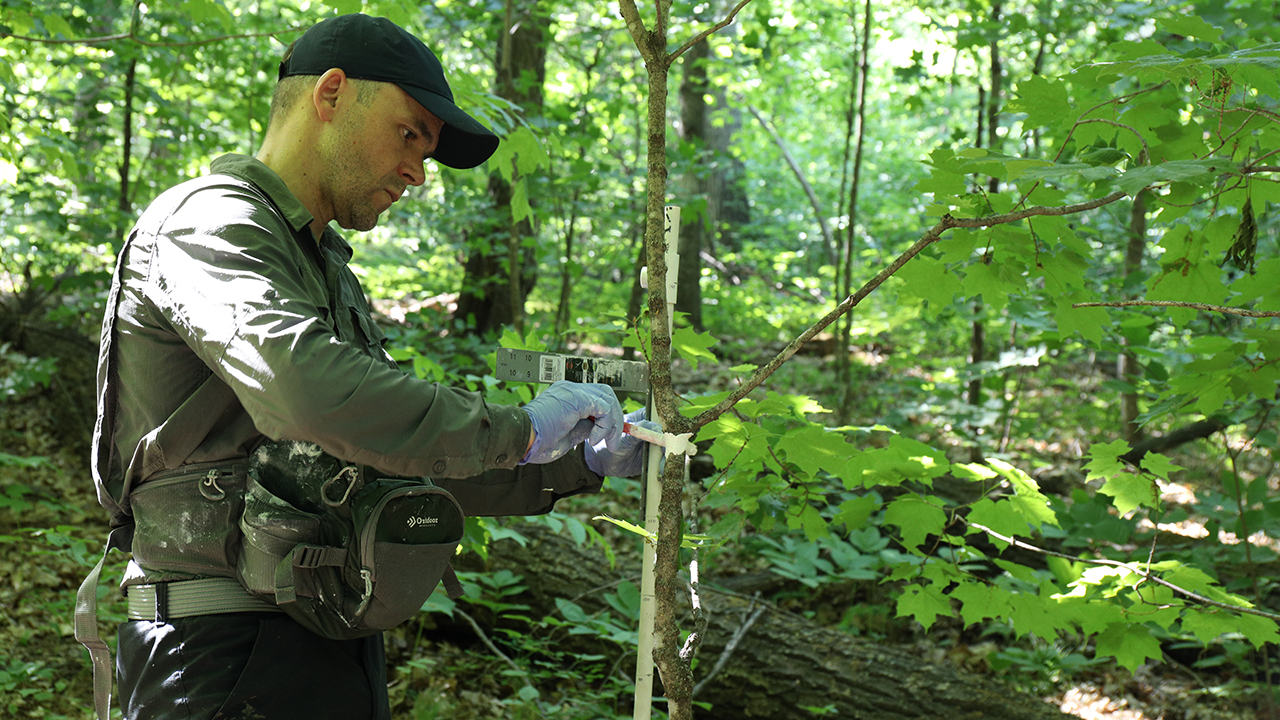
A 40-acre wooded area near the Itasca Biological Station and Laboratories is the site of a new, multi-year research project, led by College of Biological Sciences researcher Peter Kennedy, to map the forest and track changes over time.
Coniferous and deciduous forests meet in Itasca State Park. Coniferous forests — comprised of trees with needles — are hallmarks on the northern Minnesota landscape. However, with the warming climate, the “creep” of broad-leaved deciduous trees north continues. Peter Kennedy, a professor in the College of Biological Sciences, is leading an effort to mark trees and track changes.
“By establishing this as a permanent set of tagged trees, we can watch what’s happening in the overstory and understory. We’re hopeful that this plot becomes a sandbox for collaborators at Itasca and beyond,” says Kennedy.
Over five weeks in 2021, the research team tagged more than 35,000 trees and shrubs. Next year, the site will formally join a network of similar plots around the globe, known as the The Forest Global Earth Observatory.
Learn more about this project: z.umn.edu/setting-the-stage